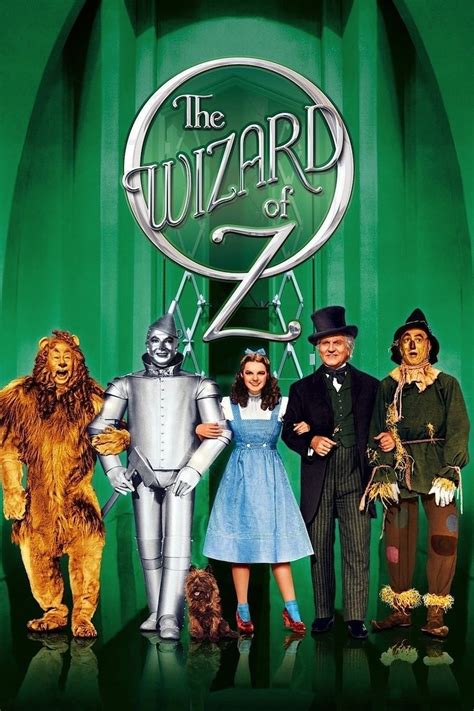The Wizard of Oz
directed by: Victor Fleming, year: 1939
actors: Judy Garland, Frank Morgan, Ray Bolger, Bert Lahr, Jack Haley
actors: Judy Garland, Frank Morgan, Ray Bolger, Bert Lahr, Jack Haley

Description:
The Wizard of Oz, released in 1939, is a classic American musical fantasy film based on L. Frank Baum's novel. It follows Dorothy Gale, a young girl from Kansas, who is swept away by a tornado to the magical land of Oz. There, she embarks on a journey to meet the Wizard, who can help her return home. Along the way, she befriends the Scarecrow, Tin Man, and Cowardly Lion, each seeking their own desires. The film is renowned for its innovative use of Technicolor, iconic songs, and imaginative storytelling.Keywords:
Adventure, Friendship, Courage, Fantasy, Self Discovery, Oz UniverseWhat is the story behind The Wizard of Oz?
"The Wizard of Oz," based on L. Frank Baum's 1900 novel, follows Dorothy Gale, a young girl from Kansas who is swept away by a tornado to the magical land of Oz. Desiring to return home, she embarks on a journey to find the Wizard of Oz, who she believes can help her. Along the way, she befriends the Scarecrow, Tin Man, and Cowardly Lion, each seeking something they lack. Together, they confront the Wicked Witch of the West. Ultimately, Dorothy learns that she had the power to return home all along, emphasizing themes of self-discovery and friendship.
Why is Wizard of Oz associated with LGBTQ?
"The Wizard of Oz" has become an iconic film within LGBTQ culture for several reasons. Its themes of self-discovery, acceptance, and the journey to find one's true identity resonate with many in the LGBTQ community. The character of Dorothy symbolizes the struggle for belonging and understanding, while the vibrant visuals and campy elements appeal to queer sensibilities. Additionally, the film's subtext and the phrase "There's no place like home" have been embraced as metaphors for finding acceptance in one's true self, making it a beloved classic among LGBTQ audiences.
How much did Judy Garland make in The Wizard of Oz?
Judy Garland was paid $500 per week for her role as Dorothy in "The Wizard of Oz" (1939). Her total earnings for the film amounted to around $35,000, which was a significant sum at the time. Garland's performance in the movie became iconic, solidifying her status as a major star in Hollywood. Despite her talent and success, she faced various challenges during her career, including issues related to her contract and personal struggles.
What is the dark side of the original Wizard of Oz?
The darker side of "The Wizard of Oz" can be found in its themes and underlying symbolism. The story explores issues such as the struggle for identity, the impact of trauma, and the loss of innocence. Dorothy's journey can be seen as a metaphor for escaping an abusive home environment. Additionally, the characters' quests for self-actualization highlight the psychological burdens of fear and insecurity. Furthermore, the original book by L. Frank Baum contains more sinister elements, including violence and manipulation, which are softened in the film adaptation.
Explore More Categories: